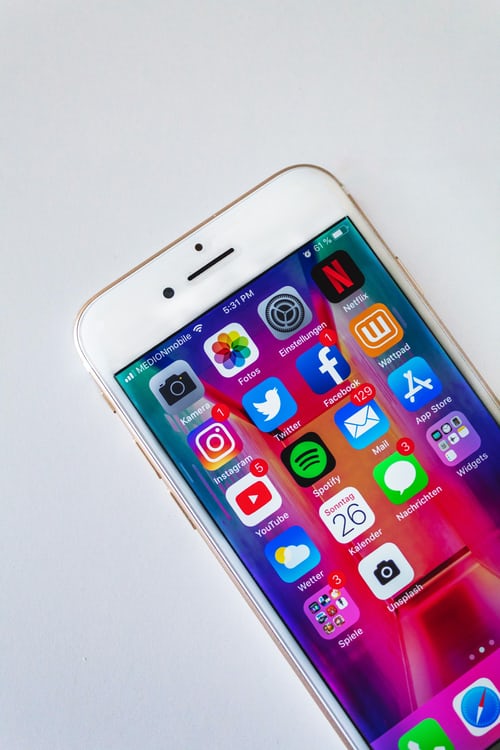
Did you know that Instagram has over 100 million active users? These numbers are even higher when it comes to Facebook - more than 2.4 billion monthly active users. A huge percentage of these users are young people that are still in high school or college. They spend a lot of time on social media networks. From connecting with their classmates to getting essay help with EssayHub, social media now serves a multitude of purposes. But, unlike in the past when young people were using these networks as their favorite pastime, modern students are using social media as educational tools too. Reputable schools from many parts of the world have decided to follow this trend and implement some changes in their programs that have helped them reach students in a better way through social media.
What the students think of social media as a tool for educational purposes and how they use them
There's no doubt that the majority of students would like to use websites like YouTube, Facebook, Instagram, and Twitter for learning new things. These platforms can be used for uploading online textbooks that let users communicate with each other. To put in simple words, this is a good way to share knowledge and resolve issues while they are working on a project for example. Some social media solutions allow the use of collaboration tools which makes the learning process much simpler and more effective.
When teachers have profiles on these networks, they can become available to their students at any time. It's easier for students to communicate with teachers in an electronic way. For this purpose, teachers can create separate pages on Facebook for example. This will allow them to keep their personal profile private. In addition, they can build a stronger portfolio in this way and look for other employment opportunities in the future. This is one of the reasons why more and more people are actually buying Facebook likes, Instagram video views and other social signals with the help of reliable websites like Famoid for example.
Furthermore, it's a well-known fact that most people are checking social media profiles of other people and admissions officers are not different. So, when a college has to make a decision regarding an application submitted by a student, it's very likely that their officers will visit the applicants' profile on popular social media networks. Students have to be careful about what they are posting online.
Platforms like Facebook and Twitter are excellent sources of information. Students often visit these platforms to get news related to current events and politics. They can also join or at least visit groups and pages where they can find information about any topic. Of course, this could be a double-edged sword because not all of the information found on these networks is useful and accurate. As you are probably aware, there is fake news involved and people have to be careful when they are reading the news on social media. It turns out that you have to go beyond the title (which is usually a clickbait title) to find out what an article is really about.
A potentially harmful role of social media in education
Social media are a phenomenon that can't be compared to anything else. In addition to the positive potential, they can also lead to certain negative effects when it comes to education. But, by identifying these problems in a timely manner and using the best actions, these effects can be prevented. For example, a student that has applied to a college should not be judged only by their profile on networks like Instagram, Twitter or YouTube. There are many other things that define good students. We should also mention that many people use social media just to have fun.
Without any doubt, social media and mobile devices, in general, can be a distraction. Instead of focusing on things that they should learn, students can spend hours in mindless browsing of their news feeds. Online harassment is another potential problem when we talk about social media. It's the anonymity that lets cyber bullies harass other students by ridiculing their appearance, revealing secrets, sharing fake photos and texts and more. Finally, social media can be used for cheating during exams.
Advantages of using social media in education
We have already mentioned a few positive examples where social media have helped both students and teachers and we will now highlight and provide a more detailed explanation.
For starters, social media can help students looking for better collaboration and interactive education. The essence of social media is socialization of users and interaction and this is exactly what students need. These networks are home to numerous communities (pages, groups, etc.) where students can find other individuals with the same needs and requirements. Of course, the people that are part of those communities are usually willing to help newbies.
The teachers can get help in the same way. Namely, there are specialized communities in which teachers share their experience, look for support and share new job opportunities. Needless to say, these platforms are good for communication between students and teachers. Since most parents have social media profiles, this could lead to their involvement in the process too. Numerous studies have confirmed that introverted students and young people that have problems expressing themselves due to social anxiety were able to overcome this problem by using social media.
Social media platforms, especially platforms like YouTube for example, have proven to be excellent places for resources used in the process of education. If you visit a website like this, you will probably notice dozens of tutorials and guides that can help you with school projects. There are other useful videos and written documents there too. Remember that the majority of these resources are completely free and you can access them from any place you want.
Finally, social media provide international exposure. You can communicate with students, teachers and other participants in the educational process from all over the world. In this way, they can adjust their activities to the latest trends in the world of education.








